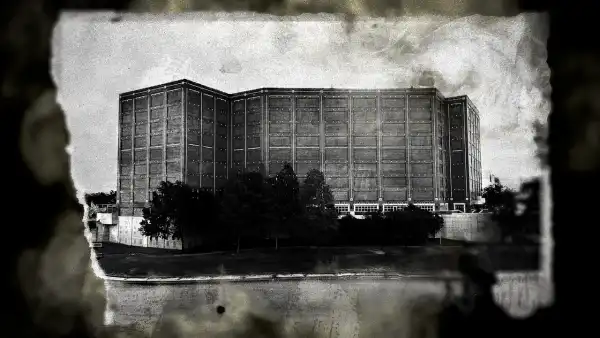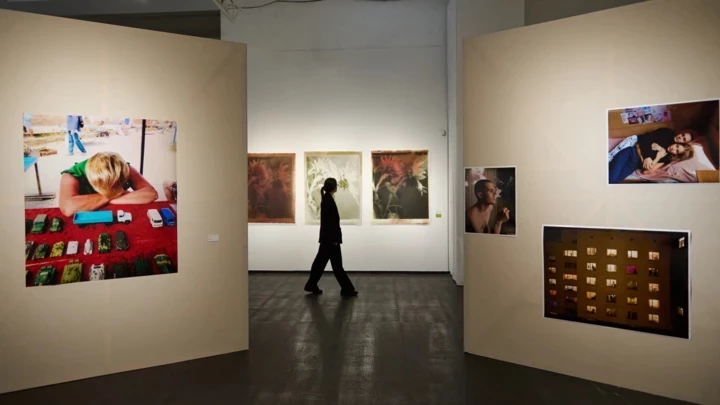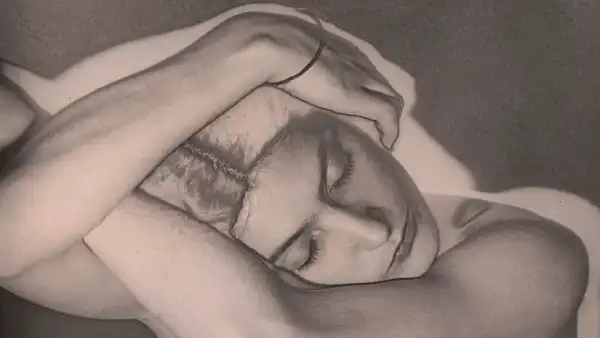
Save this storySave this storySave this storySave this storyYou’re browsing the Goings On newsletter, your guide to what we’re experiencing, observing, and undertaking this week. Subscribe to get it delivered straight to your inbox.
“When Objects Dream,” the impressive Man Ray exhibition at the Metropolitan Museum of Art (ending Feb. 1), concentrates on the artist’s sophisticated explorations of the cameraless images he termed rayographs: the spectral imprints made on photosensitive paper by randomly arranged objects after the paper is subjected to light. It shouldn’t surprise anyone that his initial forays into this artistic form, released, in 1922, as a collection of twelve abstract visuals, rank among his best. Ray had already embodied the playful, rebellious essence of Dada and Surrealism through a collection of found-object sculptures, one being a flatiron enhanced with a line of thumbtacks. Yet, akin to Marcel Duchamp, Ray existed as his own unique movement. Regardless of the means—painting, sculpture, film, photography—he reinvented it through a keen intellect and a stone-faced humor that continues to appear resolutely cutting-edge.
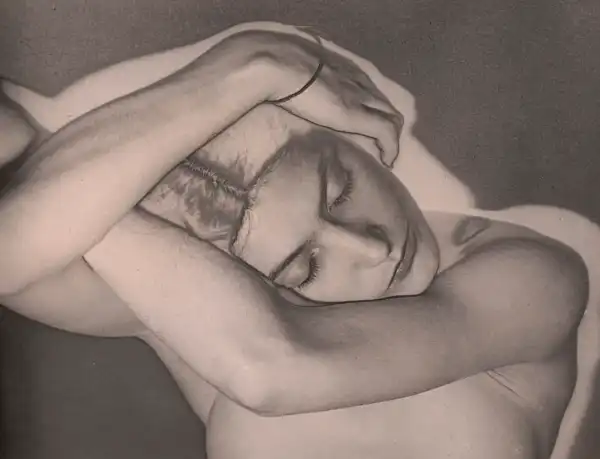
“Untitled,” 1931.Photograph © Man Ray 2015 Trust / ARS / ADAGP / Courtesy Bluff Collection
At the Met, curators Stephanie D’Alessandro and Stephen C. Pinson craft a dynamic conversation across artistic mediums, illustrating how all of Ray’s endeavors starting in the nineteen-twenties were closely tied to his photographic explorations. Their layout unfolds as a sequence of enchanting boxes, featuring portals that pull viewers extensively into the display, traversing the realms of time and space. Just as promised, numerous impressive visuals consist of photograms that—even as we discern their common parts (a magnet, a pipe, a key, a handgun)—radiate like apparitions originating from another realm of awareness. Moreover, they consistently highlight an adjacent painting or sculpture. Ray’s “Lampshade” (1921), a painted tin coil suspended from a narrow metallic rod, forecasts the grace and directness of many rayographs that followed. A collection of solarized photographs, featuring several of Ray’s renowned portraits and nudes, captures the delicate, silvery attribute found within the majority of rayographs, but in a more condensed manner.
Ray’s more disorienting photograms—messes that extend beyond the boundary or resemble primed explosives—discover counterparts in his films, displayed on the rear walls, constituting a show by themselves. Agitated, humorous, lacking a narrative, and captivating, his experimental short films embody classic independent cinema. Their relentless vitality doesn’t precisely merge everything, but they contribute to emphasizing the essence of ingenuity that fuels the exhibition overall.—Vince Aletti

About Town
Broadway
In James Graham’s “PUNCH,” drawing from Jacob Dunne’s autobiography “Right from Wrong,” Jacob (played by a noteworthy Will Harrison) is an aggressive young man from Nottingham, who causes a fatality at a drinking establishment by delivering a solitary punch. A system of restorative justice connects Jacob with the victim’s family, whose care toward him aids in fighting off the forces tempting him back toward violence. Graham’s composition, imported via Manhattan Theatre Club from the U.K., essentially serves as a PSA for the program that benefitted Dunne, and its details are enlivened by the director Adam Penford’s roving choreography. Dunne’s personal account bears significance, pathos, and affection, yet the composition’s overarching implication—that class-based stasis can be unsettled solely by tragedy—sends a chill down the spine.—Helen Shaw (Samuel J. Friedman; ending Nov. 2.)
Alt-Pop
The producer and guitarist Nate Amos and the vocalist Rachel Brown, who together comprise the indie act Water from Your Eyes, formerly had a romantic relationship; ironically, they clicked only following their separation. The two launched the group in Chicago, putting out four albums amid a relocation to Brooklyn, but they truly found their groove on the 2021 album “Structure,” which Brown says aided them in becoming friends again. Having since signed with Matador, the group has honed its sound into an eccentric, upbeat brand of alt-pop, too unconventional for dance-punk yet too spirited for slacker rock. “Everyone’s Crushed,” dating back to 2023, merged each of the group’s earlier ventures with a cynical sense of humor, whereas the newest Water from Your Eyes record, “It’s a Beautiful Place,” is weightier and more elusive, as the pair seeks optimism amidst absurdity.—Sheldon Pearce (Bowery Ballroom; Oct. 10.)
Art
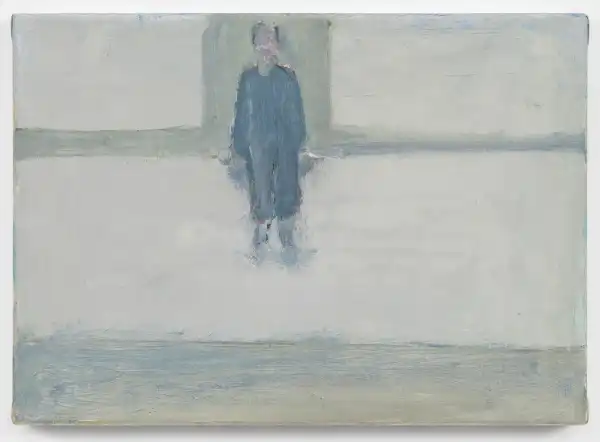
“Community Service,” 2024.Art work by Parmen Daushvili / Courtesy the artist / Polina Berlin Gallery; Photograph by Steven Probert
Entering the realm of London-based painter Parmen Daushvili’s exquisite softened hues, including its watery blues and greens, resembles going into a pool filled with eucalyptus-enriched water—calming, invigorating, and metamorphic to both mind and form. While the figures shown in several of the larger works bring to mind Lucian Freud’s contorting subjects, Daushvili’s most potent pieces are not immense, but rather small and personal. The remarkable “Community Service” (2024) displays a solitary figure who appears to approach us even while remaining still beneath the delicate filter of the painter’s refined sense of hue and his eloquent, and ultimately mellow, sensitivity.—Hilton Als (Polina Berlin; ending Oct. 11.)
Off Broadway
The departure, in the past year, of Andrew Lloyd Webber’s “Phantom of the Opera” from the Broadway stage (cape whooshes enigmatically) paves the way for its near-replacement, “Masquerade,” an immersive take overseen by Diane Paulus. Theatergoers, wearing formal attire, tail—though never catch!—the legendary masked figure and his abducted soprano, pursuing them starting at the arched basement of a midtown structure and extending to its roof. Even dedicated Webber fanatics must dismiss certain errors, such as a protagonist who seems to have secured himself during a key instant and a Stygian den clearly marked using illuminated Exit signs. The exhilaration of spectacular vocals echoing close by also wanes, due to the need for pre-recorded backing—it’s not quite unsettling to be tracked by a phantom of karaoke.—H.S. (218 W. 57th St.; ending Feb. 1.)
Dance
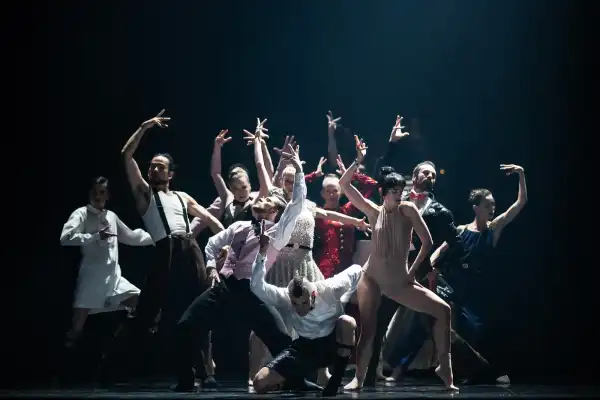
Paris Opera Ballet performing “Red Carpet.”Photograph by Julien Benhamou
For its inaugural appearance within New York following 2012, the Paris Opera Ballet forgoes any classic pieces it’s known for, instead delivering a recent work by the renowned contemporary choreographer Hofesh Shechter, who originated from Israel. His “Red Carpet” nonetheless grants some anticipated Parisian lavishness: crimson velvet drapes, outfits from Chanel, and a large chandelier much like in “The Phantom of the Opera.” Yet the style presents his familiar earthy dream, including live music evocative of rock concerts and dance clubs, clusters of figures that droop and creep as arms hover above, and ever-shifting lines along with circles extracted from some primeval folk dance.—Brian Seibert (City Center; Oct. 9-12.)
Movies
Dwayne (the Rock) Johnson, a veteran star professional wrestler, offers humor and understanding through his lead role in “The Smashing Machine,” a bio-film focused on the mixed-martial-arts combatant Mark Kerr. The writer and director, Benny Safdie, frames the narrative starting in 1997, once Kerr celebrated his initial achievements, and continuing until 2000, when personal difficulties began to take a toll. Safdie insightfully identifies the lead character’s disconcerting inherent contradictions—the primal fury compelling him toward competing and the profound self-regulation that competition entails—yet portrays such apparent crises for instance opioid addiction and friction alongside his girlfriend (Emily Blunt) utilizing a mere schematic approach. The director’s methodology remains calmly detached and subdued; even sequences showcasing brutal in-ring combat seem simply informational. Nevertheless, Johnson’s portrayal is mysteriously introverted coupled with tightly constrained; his presence stands out unfailingly from beginning to end.—Richard Brody (In wide release.)
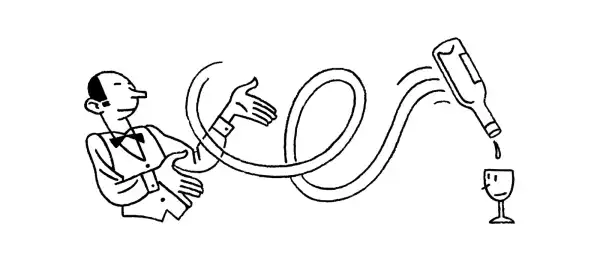
Bar Tab
Dan Stahl discovers I.P.A.s, arcade machines, and portals in FiDi.
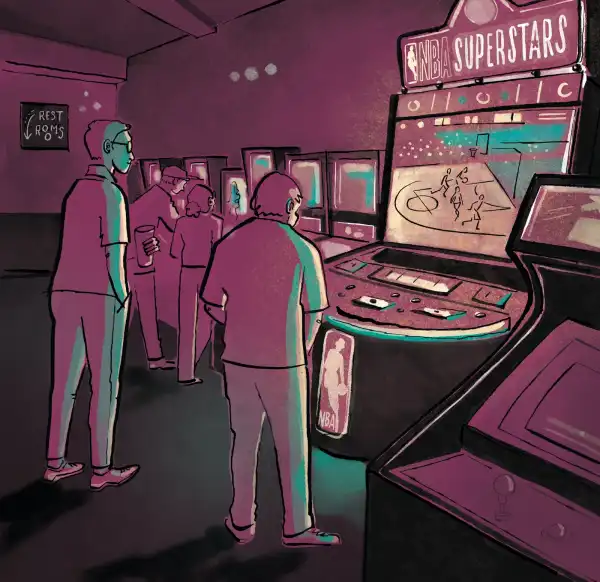
Illustration by Patricia Bolaños
If conducted thoughtfully, a trip to the latest FiDi locale of Barcade—the merged arcade and craft-beer establishment that started out in Williamsburg twenty-one years prior—can bring about a quasi-dimensional passageway. Upon gaining entrance, your first step includes going to the stone surface positioned to your left side. Scan over the chalkboard list, saturated by I.P.A.s, and select based upon your bravery. If that entails the Evil Twin Pink Pineapple, get ready for a cup of pink-tinged beverage whose sharpness stings the mouth like a laser beam. Delve into your setting. Some aspects might seem recognizable: pinball devices, Ms. Pac-Man, Street Fighter. Additional elements may present as strange, even literally, such as 超・ちゃぶ台返し!, a Japanese game whose description refers to “extreme table flipping!” Understanding the language aids in playing, as the directives are in kanji. “During the wedding . . . an event occurred,” one player recently attempted translating. He then started pounding a small table connected to the device, later victoriously tipping it over. The game showed a bridezilla launching an equivalent table soaring across a banquet area, toppling at least one light fixture. Move toward the distant section of the pub, where steps descend to a subterranean wood-layered den, perhaps featuring the most excellent arcade-style game ever, Teenage Mutant Ninja Turtles, alongside the aforementioned passageway. Between the flickering screens and battered counters, with a synth-rich eighties track blending alongside ambient beeps combined with boops, you could find yourself transported four decades backward—or, should you have drunk freely, directly into an alternate realm overall, one where you appear somehow to be a character within the universe surrounding those games. But that feeling proves fleeting, especially amid family periods that take place on Sundays, whenever a parent’s rallying cry might suddenly return your presence into the actual realm: “Hey, Susan—I’m on the verge of having to change Reesie’s diaper!”
A New Yorker Quiz
Fall vibes are finally here. Can you name the author of each of these autumnal pieces?
A poem, from earlier in the year, that starts with the sentences “Black walnuts hitting a barn roof / Fairly rapped the morning.”
A poem, dating back to 2017, including a section that reads, “Fall was approaching. / But I remember / it was always approaching / once school ended.”
A story, written around 1961, beginning with “November. Cold outside. It was warm inside, and the big combination played twelve wonderful records without stopping.”
P.S. Good stuff on the internet:
- What’s on your nightstand?
- A few tunes for October
- The restaurant run by nonnas
Sourse: newyorker.com


